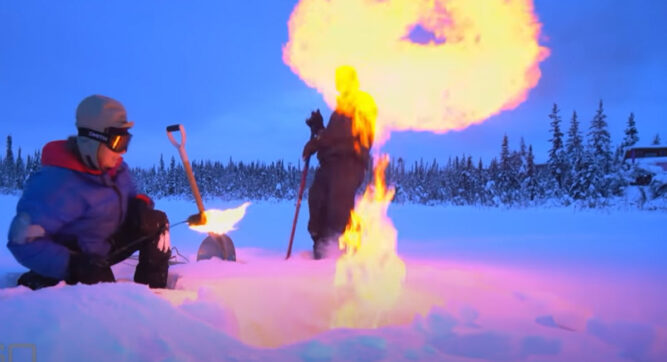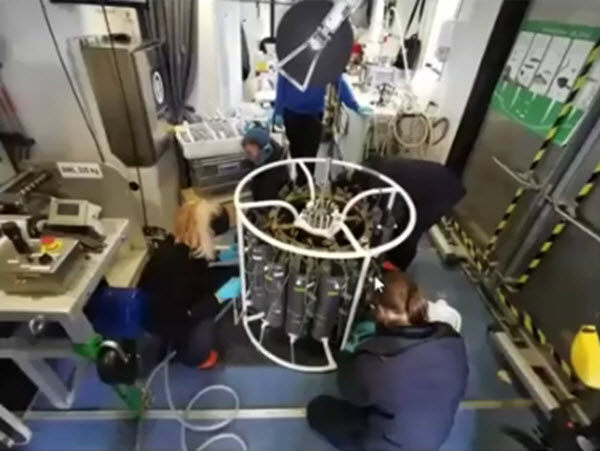
A team of international scientists have found evidence that frozen methane deposits located in the Arctic Ocean are beginning to be released, possibly added hazardous fuel to the ongoing global warming crisis. International Siberian Shelf Study (ISSS-2020) says that methane levels at the ocean’s surface are currently between four to eight times higher than usual. At the same time, slope sediments which extend across the continental shelf are loaded with frozen methane hydrates, according to a report in the Guardian. The frozen methane deposits are said to be “sleeping giants of the carbon cycle,” and the release of extra greenhouse gas could turbocharge climate change because it has a warming effect that’s around 80 times stronger than carbon dioxide.
Scientists have warned over the years that the release of this gas into our atmosphere is believed to be a major contributor to global warming.
“Climate warming is awakening the ‘sleeping giants’ of the carbon cycle, namely permafrost and methane hydrates,” Stockholm University Prof. Örjan Gustafsson, a leader of the ISSS-2020 expedition, said in a statement last month.
“How much this will lead to added emissions of the strong greenhouse gas methane is poorly understood,” he added. “This is one of the grand challenges in current climate change research and a central goal of the expedition to address.”
Meanwhile in the #Artic…'Sleeping giant' methane deposits starting to release https://t.co/LVd37jSDHX
— Giorgio Bagordo ⭕️ (@giobagordo) October 29, 2020
This new finding of methane released into the Arctic Ocean creates deep concerns that a new climate change feedback loop may have just started. The ISSS -2020 explains:
“One of the greatest uncertainties surrounding climate warming [concerns] the emission of naturally occurring greenhouse gases, such as methane, carbon dioxide, and nitrous oxide (N2O) from Arctic thawing permafrost, and collapsing methane hydrates—crystals made of methane gas molecules ‘caged’ between solid water molecules—in the seabed north of Siberia will increase in the future.”
The #ISSS2020 expedition will focus on the East Siberian Arctic Shelf (#ESAS), thought to hold most of the global #subsea #permafrost and shallow #methane #hydrates
read more about the science here (https://t.co/B4ACcvKqje) @Stockholm_Uni @BolinCentre pic.twitter.com/tznwPmNlqQ
— International Siberian Shelf Study Expedition 2020 (@ISSSarctic2020) September 15, 2020
Professor Igor Semiletof, with the Russian Academy of Science and chief scientist in charge of the expedition, described the methane discharges as “significantly larger” than anything previously recorded. The team leader also acknowledged that their findings were only preliminary, and the true scale of methane release still needs to be analyzed before it can be confirmed.
“The discovery of actively releasing shelf slope hydrates is very important and unknown until now,” Semiletov said. “This is a new page. Potentially they can have serious climate consequences, but we need more study before we can confirm that.”

YouTube
The same goes for any impact he could have on climate change, although the effects will not likely be felt until the distant future. However, over time the continuous release of massive amounts of methane is likely to contribute to climate change.
“At this moment, there is unlikely to be any major impact on global warming, but the point is that this process has now been triggered,” Gustafsson said. “This East Siberian slope methane hydrate system has been perturbed and the process will be ongoing.”
For more on this troubling discovery, you can watch the video below.
